|
The Month in Photos!

Bindy Ballerina...
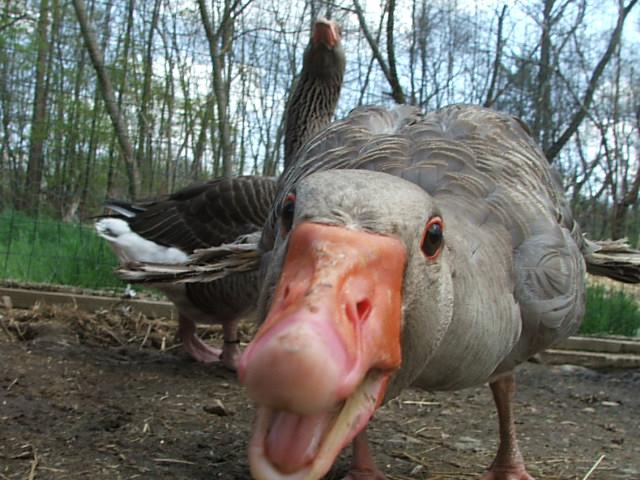
Blah, blah, blah!
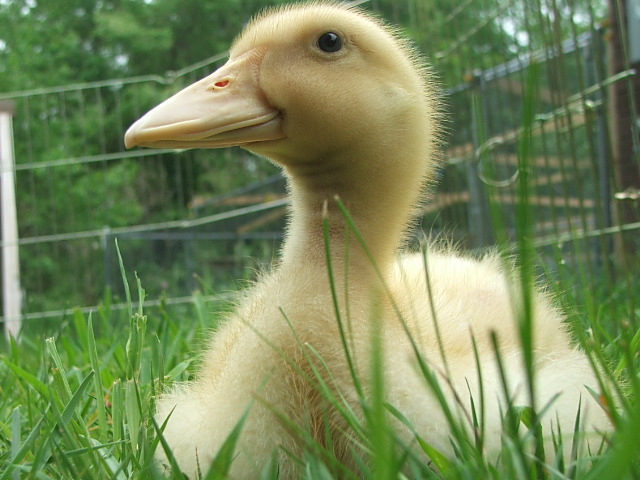
Lil Bo Peep in the grass...
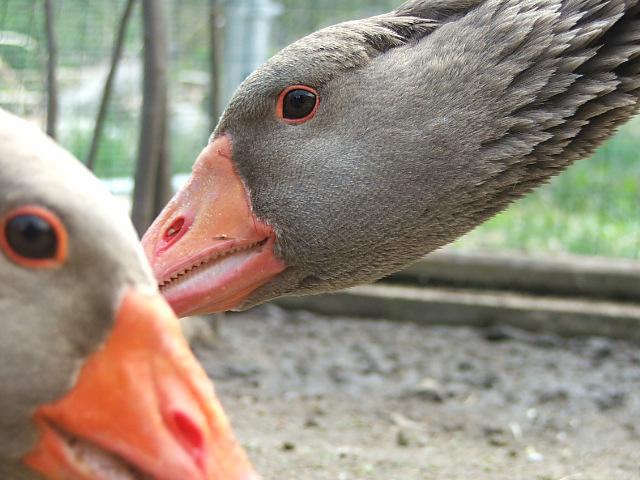
Portrait of Tutter & Angelo

Elijah, please don't trip the kitty
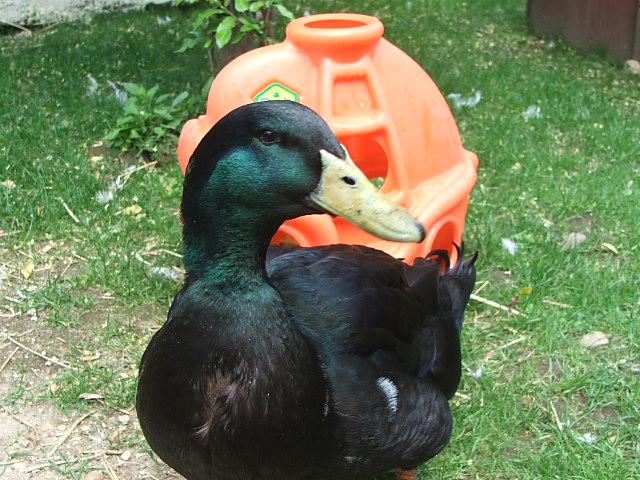
Jeffrey and the lettuce boat
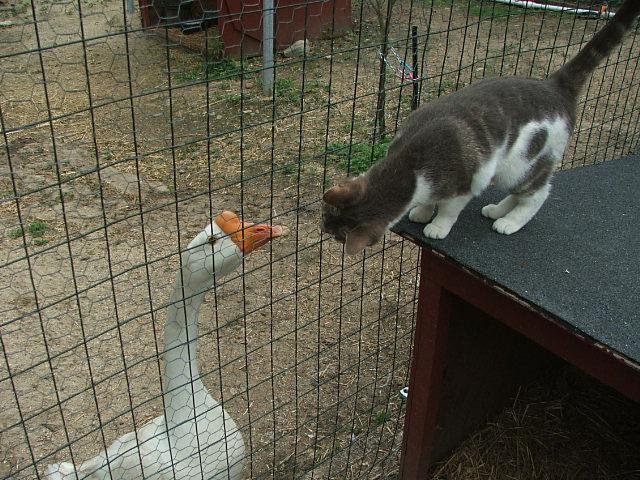
Mac & Bridget nose-to-nose
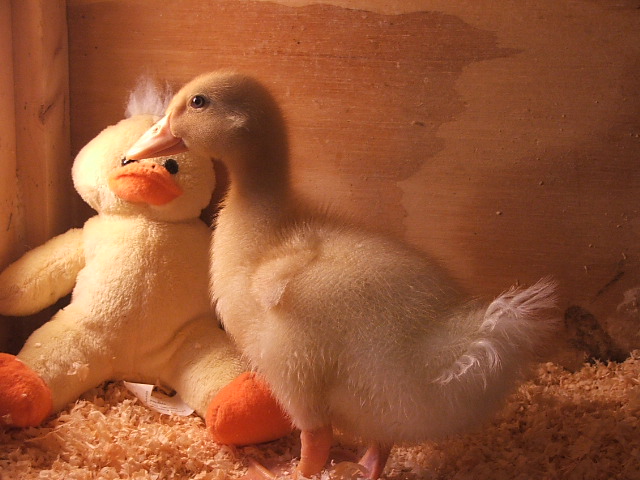
Which one is adoptable?
Majestic Newcomers!
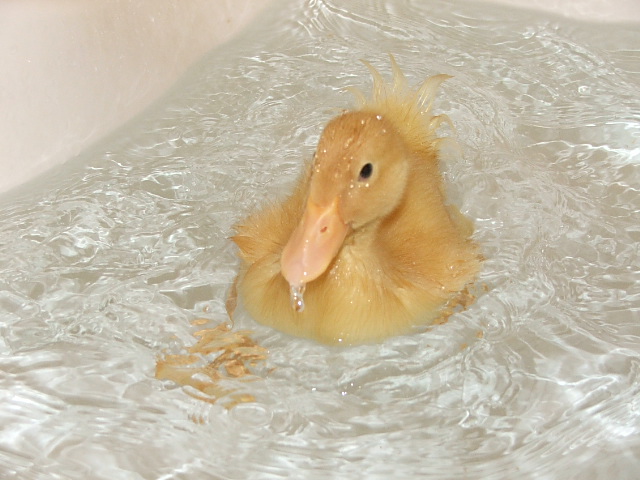
Lil Bo Peep
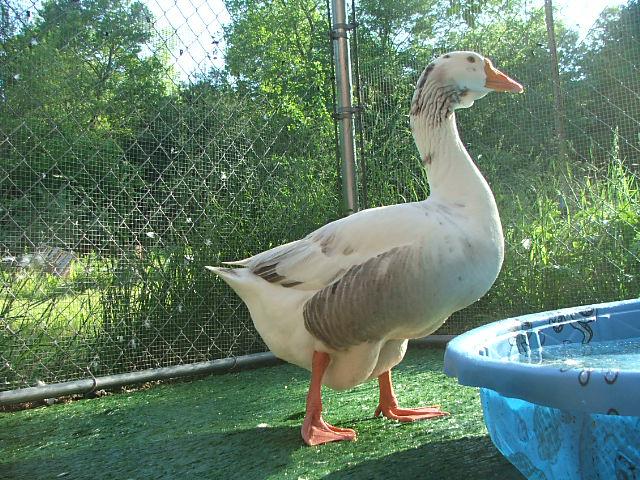
Goliath... the gentle giant...
Majestic Adoptions
Coming full
circle is both bitter and sweet... In May we said farewell to our
dear friends Tutter & Angelo.
After such a
long battle, and thanks to his
"Leg-Up Supporters," Tutter was
able to regain his full ability to walk.
Both boys
went with Bindy and Tova to a new home to join two drakes named Mike
& Ike.
Wishing
them and their new family great joy in their new lives together.
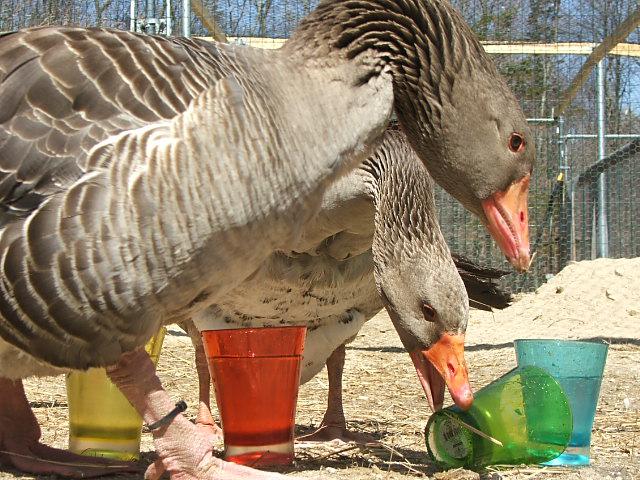
Tutter & Angelo
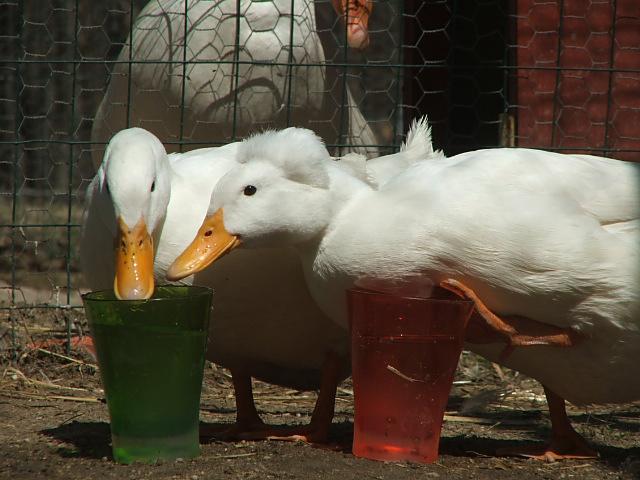
Tova & Bindy
If you are a loving
family and have a predator proof pen, please consider adopting! Click here to fill out our
online adoption
application.
If you can’t adopt, please consider sponsoring
by visiting our
sponsor page.
Recommended
Reading*
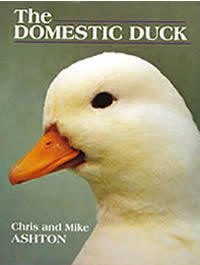
The Domestic Duck
Product
Description
The Domestic Duck is a comprehensive
handbook for breeders, keepers and exhibitors of all kinds. It is
illustrated throughout with photographs taken by the authors to show
examples of the pure breeds and their management.
Click
here
to order.
|
* |
For
our full recommended reading list, click
here. If you order from
Amazon by way of our website, Majestic receives a
portion of the proceeds! |
Contact Us
Majestic Waterfowl
Sanctuary
17 Barker Road
Lebanon, CT 06249
directorATmajesticwaterfowl.org
Our Newsletter
The Majestic Monthly is published 12 times per year.
Previous issues are available in our
Archives.
|
We have power!
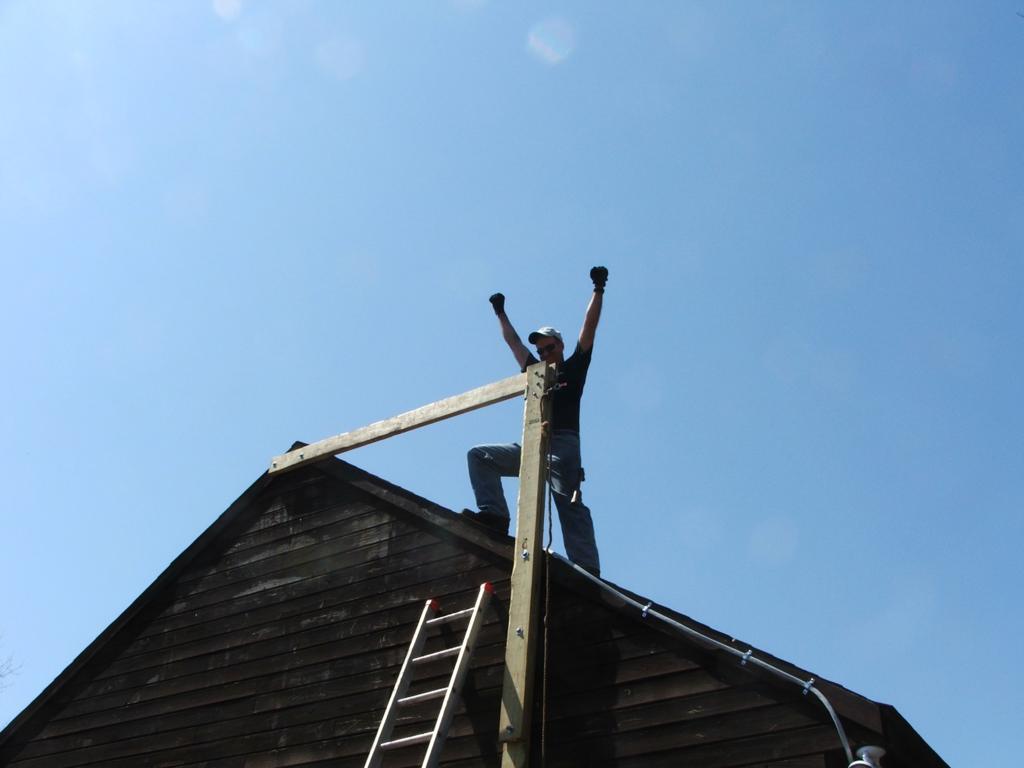
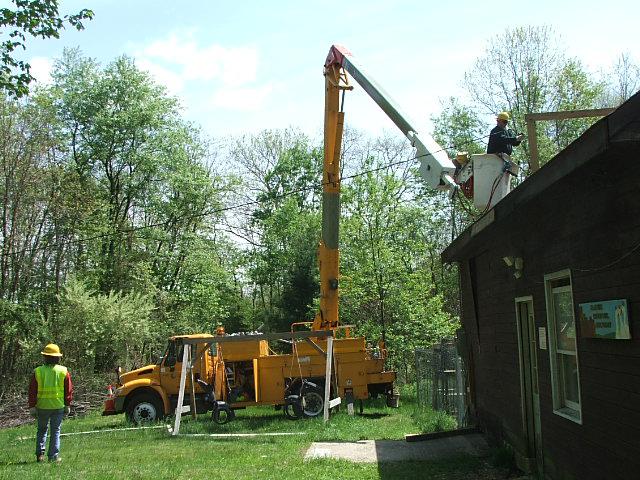
We're sending out this special thank you to
our volunteers who helped us prepare for the installation of
power lines to the barn. This direct source of power has enabled
us to install our new water pump, which can keep up with the
circulation requirements of our sanctuary. New water features
are also being installed for added enrichment of our ducks and
geese.
These sanctuary improvements were made
possible by all of our sponsors and donors--thank you!
Blindness
Vet Care
Blindness can be the result of age,
injury (especially from chickens, other ducks, geese or
birds poking at eyes), genetics, cataracts or disease. After
an initial vet examination to properly assess the situation,
you should continue to visually inspect any injured eyes on
a daily basis. If you see inflammation, swelling, moving
cataracts or any other changes, contact your waterfowl vet.
Your duck or goose may be experiencing pain and require
further assistance or medication. Cataracts can sometimes be
removed surgically by an experienced veterinary
ophthalmologist, but it is often difficult to find a
qualified vet of this sort who is willing to work on
waterfowl.
During The Transition
Ducks and geese may demonstrate signs
of fear, aggression or depression during the onset of
blindness—or if blindness is sudden, during the period
immediately following their loss of vision. You will need to
be their support system during this time by offering love,
companionship, stability and security. It is vital that you
maintain/establish trust during this time. Your feathered
friend needs you. Remember your birds need the same thing
you would: time, patience, love and security.
Creating a Safe Pen
Ducks and geese should not be kept in
free-range situations without supervision, and blind
waterfowl are no different. They require completely
predator-proof pens and a safe nighttime lock up as well.
You will need to keep all digging, climbing and flying
predators out of your waterfowl pen.
Assuming your duck or goose is already
in their predator-proof pen, you will want to enhance it to
make it safer for them. As with any waterfowl pen, make sure
there are no pointy objects in their pen. Remove any rocks,
sticks and tripping obstacles or anything they can stub
their toes on (including a door jam leading into their
house). Inspect their pen daily and fill any small holes in
the ground that they can stumble into. Try to keep ground
surfaces smooth and free of debris. Additionally, ramps are
not safe for a blind pet; remove them. Remove anything the
duck or goose can bump their head on or fall off of. You may
need to modify/enlarge entryways leading into their house.
Routine & Consistency
Ducks and geese thrive on routine—blind
waterfowl rely on it. Drinking water should be made
available 24/7 to all ducks and geese. We highly recommend
making food available 24/7 for blind waterfowl as well, so
they consistently know where to find it.
Food and water should be easy for them
to get to. If you do insist on a feeding schedule, keep to a
strict schedule. If they eat all of their food, leave their
empty food dish in their pen—do NOT remove it.
Environmental consistency is vital. Always keep food and
water bowls in the same location in their pen. Furthermore,
keep EVERYTHING the same in their pen. Do not move
things around or you will disorient them. Try to keep your
interaction with them on a schedule as well—including
topping off food and water bowls, so they know when to
expect you and what you will be doing.
Rubber Mats to Guide Them
One tactic you can use to help your
duck learn their way around their pen is by using textured
rubber mats. You can make a path that leads to their food
and water bowls or create a path into their house. These
will act as tactile signals for them as to where they are in
the pen. Be creative and help them utilize their sense of
touch. Just remember to keep the mats in the same place; do
not change them around.
Mats can also be very helpful around
trees or bushes that you do not want them to bump into.
Speaking of trees and bushes; be sure all plants are well
pruned. You want a tall trunk, so that any branches and
foliage reach well over and above the head of your blind
duck or goose. You don’t want a branch sticking out that can
poke an eye or cause injury.

Water Safety
Pool safety is vital to avoid drowning.
Remember ducks and geese trapped on water can drown. Kiddie
pools sitting on top of the ground are not safe even for
healthy ducks who can stumble over them and suffer leg
injuries while getting in and out. They are not safe for
blind ducks or geese either. If you insist on using a kiddie
pool, it is vital that you dig a hole in the ground and sink
the pool into the ground. This removes the tripping obstacle
while getting in and out. Small kiddie pools set up in this
manner tend to be safe for blind geese, but blind ducks can
easily become trapped in a kiddie pool (especially during
the molt when they drop their primary wing feathers and lose
their flapping power). Even a kiddie pool that is sunk into
the ground is not safe for an un-chaperoned duck. There are
two solutions, either keep the kiddie pool sunk into the
ground in a gated section of their pen that they cannot
access unless you are present, or build a special pond just
for them.
To build a quick pond, you can dig out
a small cavity into the earth with a slightly inclined ramp
at one end. Then use a thick mix of concrete to seal the
pond with a two inch surface all around. Now your duck can
safely walk into their water source and get back out. Close
monitoring is vital until your duck has mastered the pond’s
location and can enter and exit it with ease.
We highly recommend placing a one foot
cement lip around all edges of the pool to prevent your duck
from pulling dirt into their pond while they are sitting on
it. This sort of ducky fun will quickly make a muddy mess of
things. This lip will also will give them a reliable signal
when they are getting close to the water’s edge.
The great thing about his pond system
is you can easily cement a small PVC outtake pipe in place
at the deep end of the pond to create a drain. Then, to
clean the pond, simply run a hose down into the deep end of
the water and turn it on. The fresh water will flush out and
replace the old water.
The one drawback of a concrete pond
made in this fashion is, in colder regions, the pond will
crack over the course of winter and will need a quick
re-facing every spring. Keep in mind also that neither ducks
nor geese should be allowed to sit on a small pond that can
freeze over while they are in it. Sunk-in kiddie pools and
small non-circulating, freezing ponds should be drained in
winter and filled with hay or safely covered over to prevent
a flock member from falling inside of them.

Companionship
If your duck or goose is alone, you
should highly consider giving them a companion to offer them
company and reassurance. If your duck or goose is completely
blind, new flock members should not be welcomed in until
your blind bird has completely adapted to their new
situation and environment. If your duck or goose is slowly
losing their vision, it can help to introduce a newcomer
while they can still see. Avoid adding chickens as
companions to blind ducks or geese, as they are known to
peck at injuries and eyes. Instead, try to find a docile or
shy duck or goose that is smaller in size than your blind
bird. It is highly recommended to add a hen rather than a
drake or gander as a companion to a blind duck or goose.
Boys can sometimes get a little overzealous during the
mating season (spring & summer) and accidentally cause
injury to a special needs bird.
Exercise and Stimulation
Your blind duck or goose will need
exercise; you do not want them spending their day sitting in
the same place without any stimulation. If you notice this
is occurring, you will need to go out and visit them more
frequently and coax them to move around. Healthy green
snacks can be a good way to reward them for moving around.
Blind ducks can forage too—encourage them to keep up this
behavior. This is where a companion for them can really
help. Blind flock members will often follow sighted ones to
avoid being alone. A good friend will keep them happily
entertained, provide security and keep them moving around.
Harness and Leash
Use extreme caution when taking your
blind duck or goose outside of the safety of their pen. If
you insist on taking them for walks in the yard, you should
invest in a high quality, well-fitted duck/goose
harness
and
leash. When blind waterfowl get spooked, they tend to flap
quickly across a yard and can put themselves into immediate
danger; you will need to have constant control over them
outside of the safety of their pen. Once you have your
harness and have trained and made them familiar with it
inside of their pen, you can begin to take them outside
of their pen. Start out small. Don’t go far and don’t stay
out long. Remember to keep to a routine. Walks should be on
a timed schedule and the walk should be directed on the same
path every day. You can go further along the path as your
duck becomes more comfortable, but do not stray from the
path.
Signal Sounds
When approaching the pen of your blind
duck or goose, use a familiar sound to offer reassurance, so
they know that it’s you coming. You can talk—call out a
familiar phrase like “Mommy’s coming!” or whistle or even
sing a song (my personal favorite!). This tactic
works well with partially blind ducks and geese as well.
Additionally, when dealing with blind feathered friends,
some people tie a small bell around their belt loop or
bootlace so their blind friend can hear them moving around
in their pen. This works when taking them on leashed walks
as well. Be careful to choose large bells, so if it happens
to fall off it does not pose a choking threat to your flock.
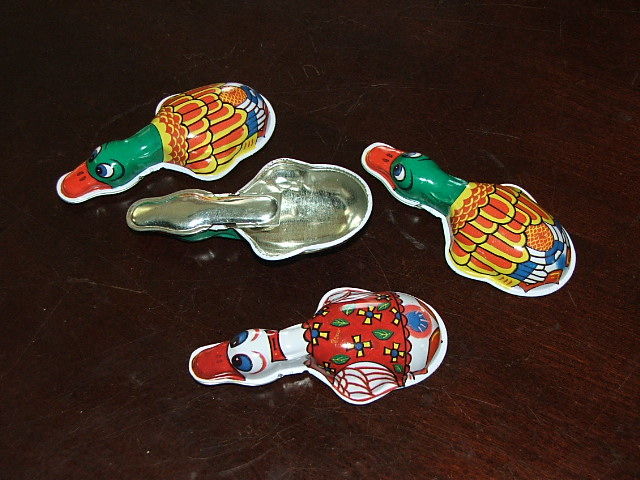
Other ideas include a specific signal
when visitors are coming over to visit your duck or goose.
You can use bells, whistles, “clickers” (like the kind used in dog training),
or any other unique sound. Whenever a stranger comes to the
pen for a visit, be sure to make the sound and also ensure
that your guest brings a treat for your duck or goose. This
way, your feathered friend will know that the companion with
you is safe and that they will get a treat upon meeting
them—positive reinforcement. You may even want to introduce
another specific sound/signal when you or a stranger is
about to touch your pet duck or goose, this way the bird
expects any physical contact before it actually happens and
isn’t frightened.
Remember, small steps are best when
working with blind waterfowl. Be consistent and adhere
closely to routines. Blind ducks and geese can live enriched
and productive lives; you just need to help them to do it.
The time you spend with them can be rewarding for both you
and your flock mate.
To purchase cute duck clickers like
those featured above,
Click Here.
|

